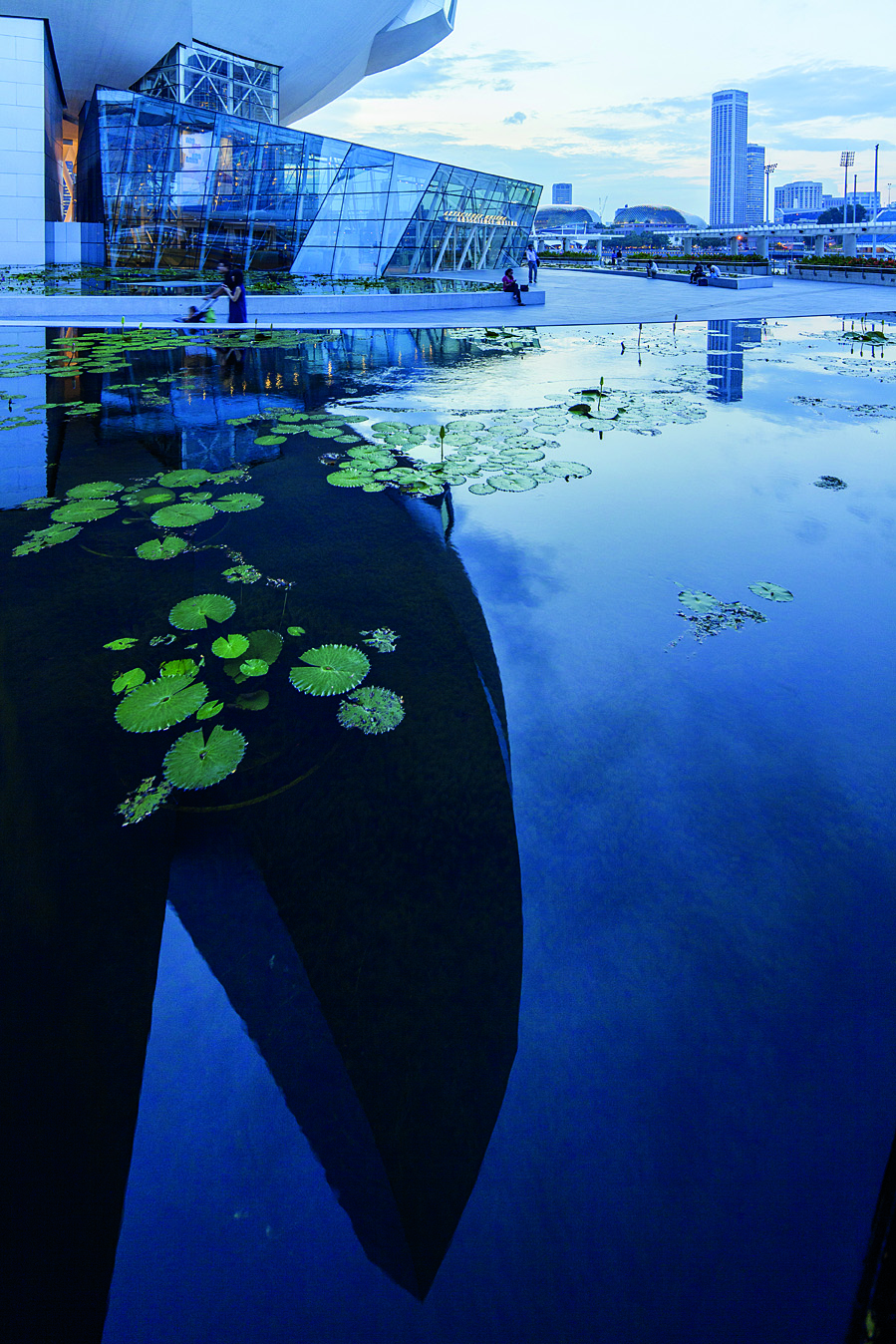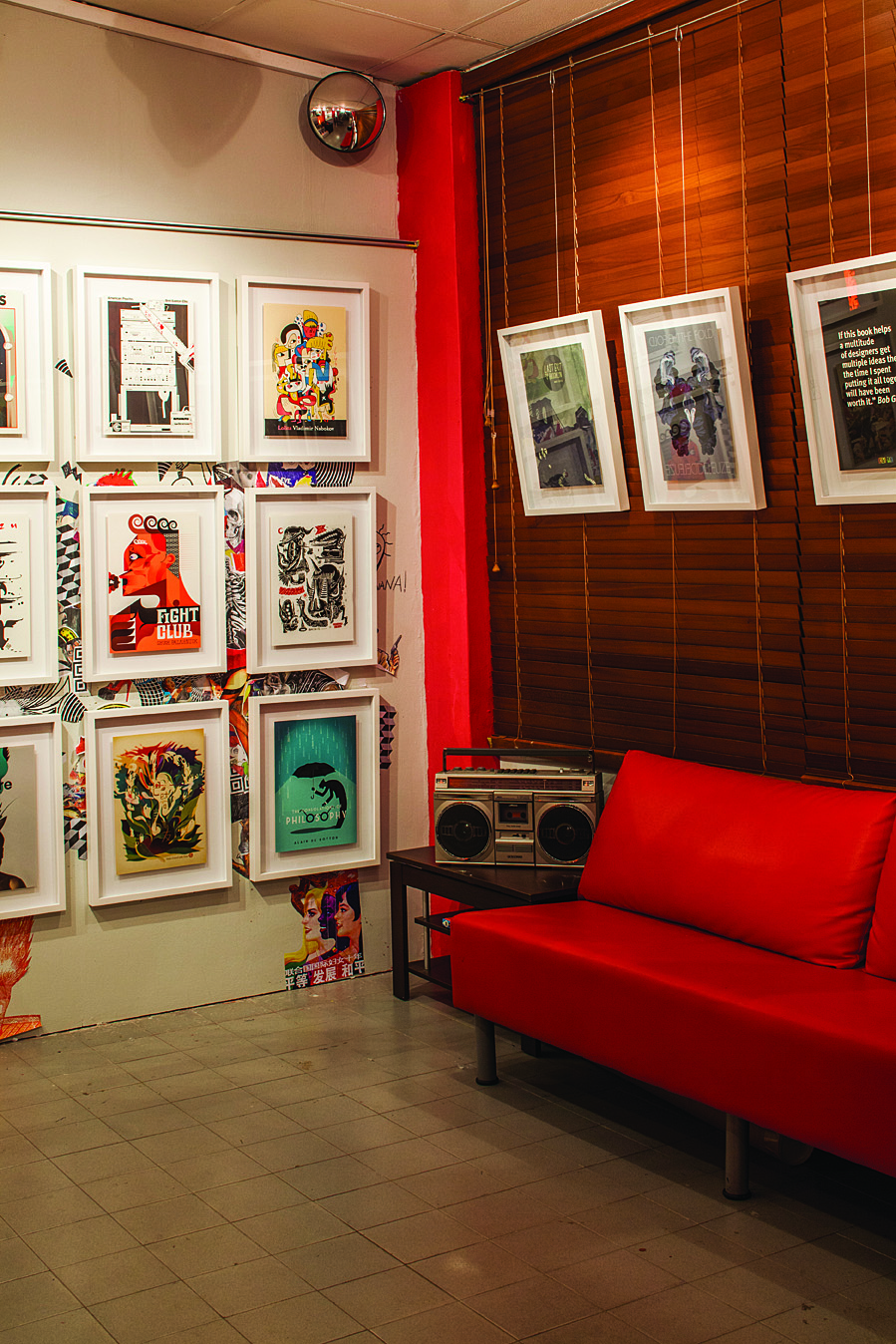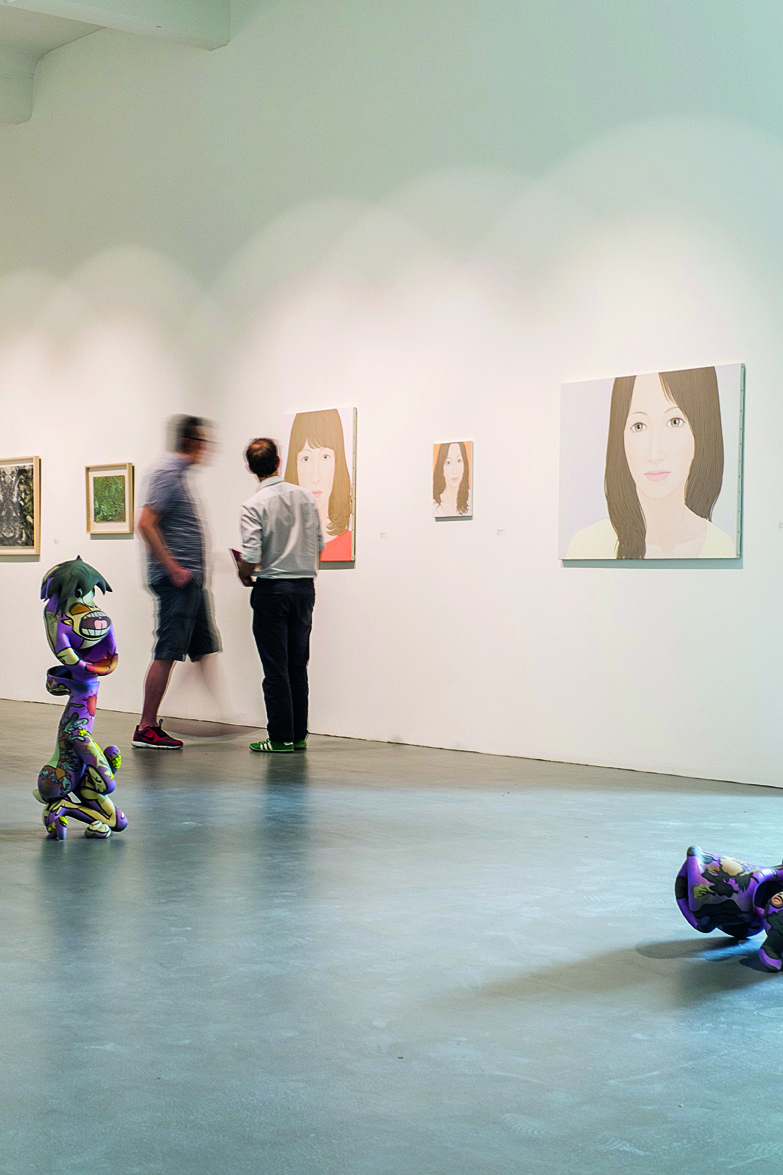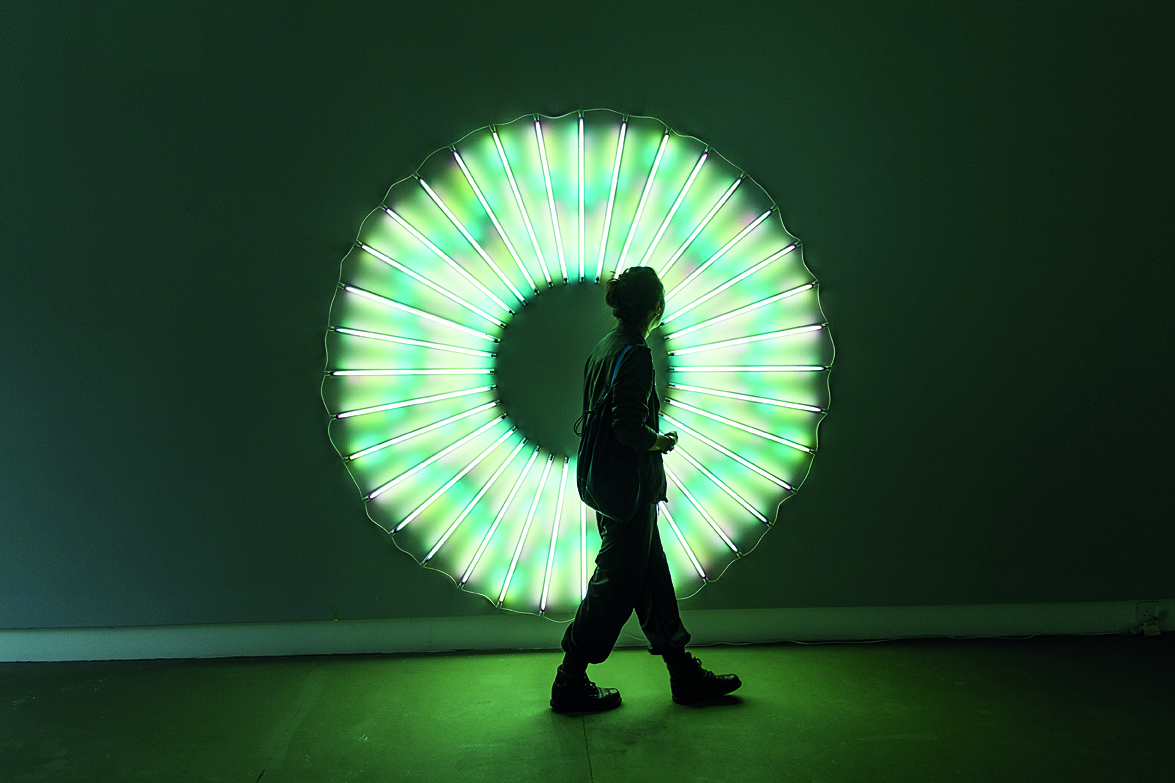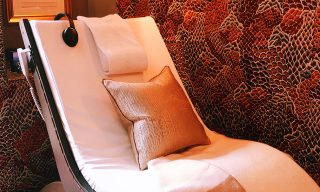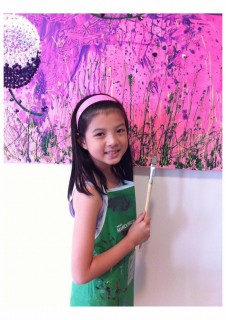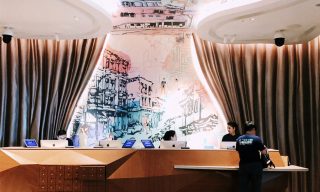City-State of the Art
Investing in its cultural capital as never before, Singapore aims to establish itself as the arts hub of Southeast Asia.
Photographs by Caleb Ming
When Robert Zhao Renhui decided to pursue fine-art photography as a career, his mother and father were none too thrilled. As traders, his parents, like many Singaporeans, felt that going into business would make it easier for him to find a job in such a highly competitive society.
“My parents felt like there wasn’t any viable economic value in art school,” recalls the 30-year-old photographer. “In the end they supported me, but the government also really helped me out.”
In the past, many students like Zhao Renhui, now one of country’s best-known artists, had to look to the West when applying for art school given the dearth of programs in Singapore, where business and professional degrees have long been logical choices. But with opportunities in finance slowing along with the growth of many developed countries, young people—and the government—are looking to less traditional careers as a means not only to making a living but also as a way of life. Like so many things in this country, where campaigns exist for everything from eradicating mosquitoes to hand-washing, a plan is in place to expand on the remarkable growth it has experienced over the past 50 years. In addition to providing grants, scholarships, and other tools to help develop individual Singaporean artists, the government is now focused on building an entire arts and culture “ecosystem,” a word often used when discussing the city-state’s plans to become a regional arts hub.
Singapore is moving quickly to put in place the intellectual and physical infrastructure that it hopes will elevate it to the ranks of great art capitals such as New York, London, and Paris. That’s a tall order, and there are plenty of skeptics, but with hundreds of millions of dollars at its disposal and the ruthless efficiency for which it is famous, the country is on its way to shaking up the art world in Southeast Asia.
Contributing to this are events like the Singapore Biennale, first held in 2006, and Art Stage Singapore, the annual art fair founded by Lorenzo Rudolf in 2011. “This region is of increasing interest in the international art world and we want to be the door to Southeast Asia,” explains the Swiss-born Rudolf, who also founded Art Basel Miami Beach and ShContemporary in Shanghai. This year’s Art Stage was the most successful edition yet, with 131 galleries, 600 artists, and more than 35,000 visitors from around the world.
The excitement at Marina Bay Sands, which has hosted the event for the past three years, was palpable not only for the breadth of galleries and quality of art but for the attention it has brought to the region. “If I hadn’t been here last year I don’t think as many people would know me,” says Solo-based designer Aditya Novali, whom I met at the Indonesian Pavilion, which showcased 30 artists this year.
“For Indonesian artists the important thing is exposure outside of our country,” concurs Oei Hong Djien, one of Indonesia’s biggest collectors. “For events this size you need integrated infrastructure and in Southeast Asia, Singapore has the best.”
That infrastructure extends to a high-security vault on the grounds of Changi Airport. A veritable Fort Knox with 30,000 square meters of state-of-the-art strong boxes, Singapore FreePort allows museums and art collectors to bank valuable paintings and installations without worrying about a heist. Equally significant, the facility, which opened in 2010, allows nonresident collectors to store works without having to pay taxes or file customs forms, a move designed to improve Singapore’s competitiveness as an arts center.
Much as this sort of infrastructure is essential, however, no less important is vision and coordination. Numerous government agencies have been tasked with building world-class institutions and facilities that will not only attract more high-net-worth individuals, but also enrich the lives of ordinary Singaporeans.
“We are creating a visual arts ecosystem which we think is important to allow the whole art scene to grow,” explains Eugene Tan, program director at the Singapore Economic Development Board. “More importantly it is about the government recognizing that art is something important in our society, and that arts and culture need to be a more important part of our lives.”
Tan should know. With a PhD in art history from the University of Manchester and years of experience curating shows in Hong Kong, the fortysomething speaks more like an art-world insider than a soulless bureaucrat. Since taking up his new role in 2010, he has spearheaded the development of Gillman Barracks, a leafy six-hectare compound built in the 1930s to house British soldiers that has been transformed into a contemporary art center. Though still a stretch to compare it to New York’s Chelsea or the Artist Quarter in London, the project is already off to a good start with 14 local and international galleries ranging from New York–based Sundaram Tagore to an outpost of Tokyo’s Mizuma Gallery. Several more spaces are set to open by the end of this year, as is the Centre for Contemporary Art, which will focus on visual-arts research and residency programs.
Yet the US$8 million invested in creating Gillman Barracks pales in comparison to what will soon become the crown jewel of Singapore’s art scene. With a budget of US$422 million to refurbish and modify the former Supreme Court and City Hall, a full-time staff of 60 is working around the clock to unveil the National Art Gallery by mid-2015. A “visual flyover” of the plans to unite the two historic buildings reveals an ambitious effort to create a museum as large as the Musée d’Orsay in Paris.
“To give up those two buildings, which are our most prominent colonial buildings, says something about the importance our government places on art,” Tan says.
The National Art Gallery, whose name may change given the unfortunate acronym, will be a 60,000-square-meter visual art museum housing a permanent collection built up over decades by the National Heritage Board. When its doors open, not coincidentally around the same time Singapore celebrates its 50th year of independence, the NAG will house the world’s largest collection of Southeast Asian art.
“Our focus is telling the visual history of Singapore and Southeast Asia,” says museum director Low Sze Wee. “In terms of size and breadth [of Southeast Asian art], we will be the largest museum and the only one with a permanent display.”
The aim of NAG is not only to create an institution that will draw long overdue attention to the rich visual tradition of the 10 countries that form Southeast Asia but also to educate the public.“We are devoting an entire floor to an arts education center for children and young people,” adds Low. “This is unprecedented in Singapore.”
That absence of arts education in the region is rued by many in the region who see Singapore’s drive to build institutions as essential for a healthy long-term art market. Education and research should determine an artist’s importance rather than the whims of a collector or a small cabal of self-interested tastemakers.
“The ideal infrastructure for the arts is being built in Singapore,” says Alia Swastika, a freelance curator from Jakarta. “It will help the art community in a region where, in most cases, there is not much government support.”
An emphasis on art education already appears to be resonatingamong Singapore’s youths. Since the School of the Arts high school opened its doors in 2008 it has been swamped with demand for the 200 spots that open up every year. The Goodman Arts Centre, where photographer Zhao Renhui was lucky enough to secure a space for three years, has a long waiting list for the 48 studios subsidized for artists and performers in the repurposed former school building.
“We truly believe that you can make a living from the arts—a reasonable one, that is, and one that is meaningful,” explains Khor Kok Wah, deputy chief executive officer at the influential National Arts Council. “Many of Singapore’s young people want to be intellectually challenged.”
Many of these students Khor is talking about can be found at the LaSalle College of the Arts, where kids hang out on Astroturf in a very urban homage to the traditional American college campus. With fine art and art history programs at the undergraduate and postgraduate levels, the school is at the forefront of a drive to offer young Singapor-eans an alternative to the relentless quest for wealth that is still being pursued by the majority of society. “There are many good artists here, as good as any in Southeast Asia,” says Charles Merewether, director of the Institute of Contemporary Arts Singapore, which is located on the same campus.
Merewether, a former curator and art history professor, disagrees with critics who feel that Singapore cannot nurture a vibrant art scene because of its state-controlled press and low tolerance for dissent. “Every society shapes its own economy and there is no universal approach,” he adds. “The Singapore approach is quite pragmatic and business-oriented but for here it is the right approach.” Merewether claims that censorship “has not been a big issue” in organizing shows at any of the clean, well-lit exhibition spaces on campus. “People are aware of the sensitivity of certain subjects but there is a lot we can do under the banner of education.”
If those sensitivities are an issue for some, others feel the nature of society may be too sterile for anything organic to grow. Several galleries have closed their doors in the past year, with their owners citing a lack of local interest in the arts as a reason for leaving. Francois Grossas, a former banker who ran Galerie Waterton in the Tanjong Pagar Distripark, packed up after two years of lukewarm sales.
“The government is certainly trying to make Singapore an art hub but it will never be like Hong Kong,” says Grossas, who primarily sold contemporary art from Indonesia and the Philippines. “This is because you don’t create a market and a culture from the top down.”
Valentine Willie, who ran Valentine Willie Fine Art in the same warehouse district, has also chosen to leave Singapore, citing similar reasons. “Can you really have an art hub with the issue of censorship?” he asks.
Grossas doesn’t mention censorship as a primary reason for becoming disillusioned with Singapore but does point out what he believes is a more fundamental problem. “You have to have artists in sufficient numbers along with talent and diversity,” he says. “You have to have a public who is really interested in art, not just for speculation.”
To generate that sort of interest, it may take more galleries like Kult, where none of the works are priced above US$2,500. Tucked away in a community space in Emily Hill, the super-hip gallery opened three years ago in tandem with an edgy, fanzine-style magazine with the same name. About 70 percent of the artists shown are Singaporean, although Kult does not place a preference on them.
“Artists submit work every month and then we decide which ones to feature,” says Zarani Risjad, a curator at the gallery. “Our goal is to get their juices flowing.” With original works priced in the hundreds of dollars, Kult has become an important incubator for graphic art that is as raw and underground as one can get in this squeaky-clean town.
The minds behind Singapore’s drive to enrich lives with more than branded goods and luxury cars take a longer view and one that is more expansive. In their eyes, the country belongs to the region and that region is inseparable from their own identity. “The opportunity for Singapore is our geographic and cultural setting,” offers Tan Boon Hui, director of the Singapore Art Museum. “Singapore makes sense in the context of the region because we can show art on an equal basis.”
To be sure, curators and other art professionals will have to take care in promoting works from around the region and ensuring that they are given equal treatment, especially given the varied cultural histories of Southeast Asia. “Asia should be international but always think of its own identity,” explains Fumio Nanjo, director of the Mori Art Museum in Tokyo. “Museums promote a new cultural vision of a city’s development.” Prominent figures like Nanjo hope the rich tapestry of religions, cultures, and traditions will be a binding force for the region. “Diversity will enhance understanding,” he adds. “But we have to get more people involved in museums in order to have more exchanges between people, ideas and artists.”
With almost 50 museums already—private, semi-private, or national—the Lion City is well on its way to boosting tourism numbers above the impressive 12 million it attracted last year. But it’s not just visitors who are starting to flock to the museums and galleries; a quick walk around the stunning ArtScience Museum reveals a high number of young Singaporeans taking in the exhibits, which are mounted professionally in climate-controlled spaces with proper lighting and well-researched catalogues.
Call it an ecosystem, a grand design, or even a marketing scheme. Regardless of what you call it, it is being built and is already proving popular with people who care deeply about the arts in Southeast Asia.
“There is a big gap between the art market and academic research, and I hope museums like the National Art Gallery will address this,” says Helena Spanjaard, an Amsterdam-based art historian and expert on Indonesian art. “I see how Indonesian art is promoted in Singapore and how it is displayed in a professional way, and this is so important for the artists, wherever they come from.”
Whatever the underlying reasons, Singapore recognizes this importance and realizes that it will take more than cheap food stalls, subsidized housing, and efficiency to keep its people and international travelers happy. Zhao Renhui, for one, makes it clear that he doesn’t take his grants for granted.
“In Singapore, our artists are very spoiled with independent spaces, showcases, and the grant systems,” says the photographer, who recently took a working trip to the Arctic paid for by a government grant. His pictures are finding their way into collections and galleries around the region for all the right reasons—skill, creativity, and technique. But even Zhao Renhui admits, “I wouldn’t be where I am today without the government.”
—
The Details
SINGAPORE ARTS
—Art Spaces
With seven galleries spanning 1,500 square meters, the Institute of Contemporary Art Singapore (1 McNally St.; 65/6496-5075; lasalle.edu.sg) at LaSalle College of the Arts is a student gallery that goes beyond thesis shows, although there are plenty of those. It’s a good bet if you want to see new, experimental works from a variety of genres and places.
Gillman Barracks (9 Lock Rd.; gillmanbarracks.com) is Singapore’s newest arts hub with 14 galleries and the upcoming Centre for Contemporary Arts calling it home. International highlights include Mizuma Gallery from Japan, South Korea’s Space Cottonseed, and the Drawing Room from the Philippines. The compound also features three dining outlets.
For a sampling of local street art, visit Kult Gallery (Emily Hill, Blk C2-5,11 Upper Wilkie Rd.; 65/6338-1066; kult.com.sg). In addition to selling affordable works (nothing costs more than US$2,500), Kult produces a free art magazine—but you’ll have to move fast to grab a copy, as issues are snapped up almost as soon as they are published.
From science and history to design and visual arts, exhibitions at the lotus-shaped ArtScience Museum (10 Bayfront Ave.; 65/6688-8328; marinabaysands.com) run a wide gamut and are among the most well-attended in town. Past shows have featured works by Andy Warhol, Dalí, and van Gogh.
In the Mountbatten area, the Goodman Arts Centre (90 Goodman Rd.; 65/ 6342- 5790; goodmanartscentre.sg) complex is home to the National Arts Council of Singapore, dozens of creative groups, and facilities such as galleries, rehearsal studios, and a black-box theater. There’s always something interesting going on; visit the center’s website for an events listing that changes daily.
—Art Fairs
On October 26, the fourth edition of the Singapore Biennale (singaporeartmuseum.sg) will kick off across a number art spaces in the Bras Basah-Bugis precinct, showcasing dozens of contemporary Southeast Asian artists. Also look for the Affordable Art Fair (affordableartfair.com; Nov. 21–24); last year, the event exhibited modestly priced works from 85 local and international galleries.
Art Stage Singapore (artstagesingapore.com) returns next year on January 16–19.
Originally appeared in the June/July 2013 print issue of DestinAsian magazine (“City-State of the Art”)



